Scaffolding Rental Mehlville
Top 10 Scaffolding Rental in Mehlville
Receive up to 3 Rent Scaffolding quotes for your project today! Compare profiles, reviews, accreditations, portfolio, etc... and choose the best offer.
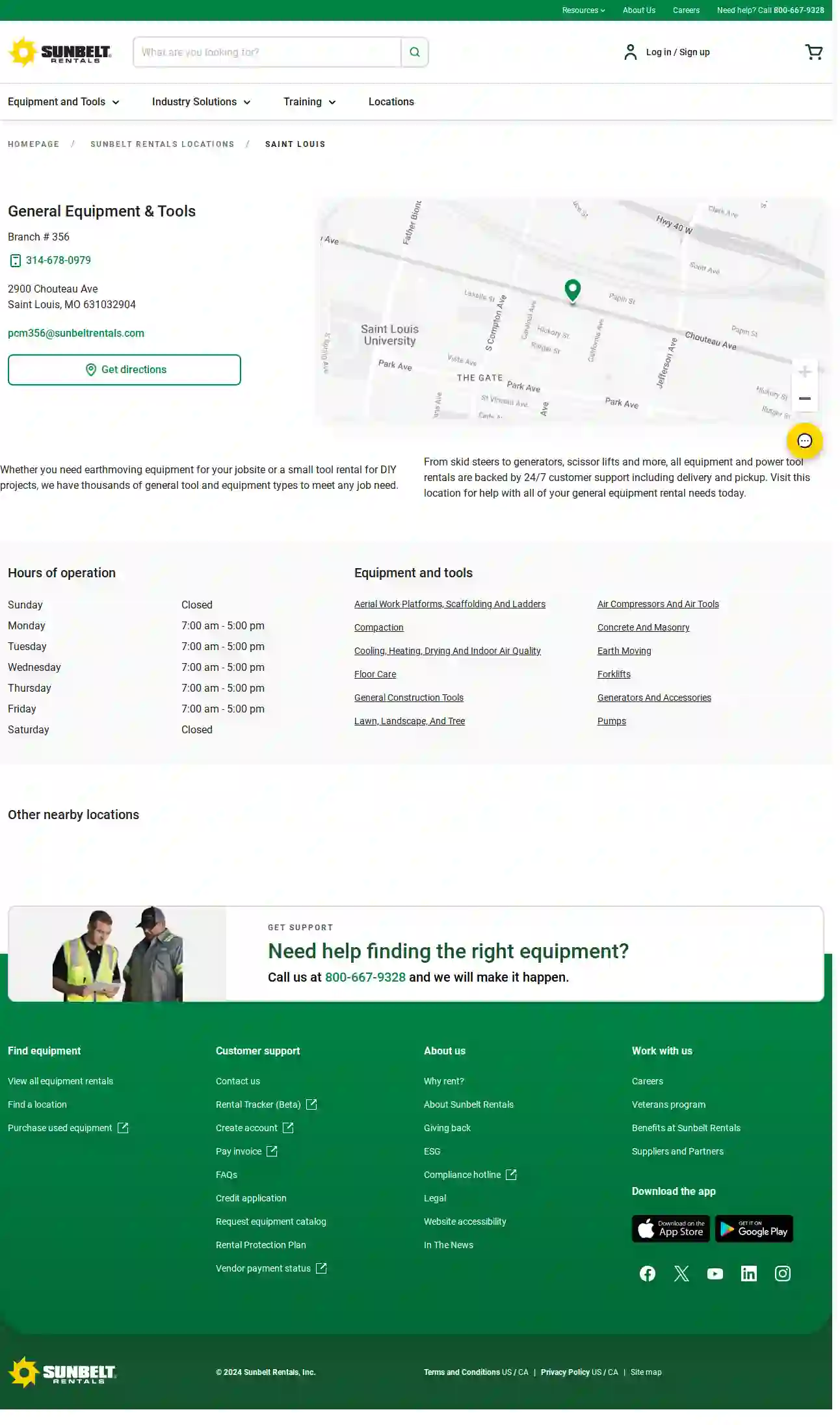
Sunbelt Rentals
4.919 reviews10900 Page Ave, Saint Louis, 63146, USSunbelt Rentals: Your One-Stop Shop for Equipment Rentals Sunbelt Rentals is a leading provider of equipment rentals in the United States and Canada. We offer a wide variety of equipment for rent, including aerial work platforms, scaffolding, ladders, cranes, boom trucks, scissor lifts, low-level access equipment, manlifts, and more. Whether you're a homeowner tackling a DIY project or a contractor working on a large-scale construction project, Sunbelt Rentals has the equipment you need to get the job done right. Why Choose Sunbelt Rentals? Sunbelt Rentals is committed to providing our customers with the best possible experience. We offer a wide range of services, including: Competitive rental rates A wide selection of equipment Fast and reliable delivery Expert technical support 24/7 customer service Our Commitment to Safety At Sunbelt Rentals, safety is our top priority. We are committed to providing our customers with safe and reliable equipment. We also offer a variety of safety training courses to help our customers operate our equipment safely and efficiently. Contact Us Today If you're looking for equipment rentals in Saint Louis, MO, contact Sunbelt Rentals today. We'll be happy to answer any questions you have and help you find the right equipment for your needs.
- Services
- Why Us?
- Gallery
Get Quote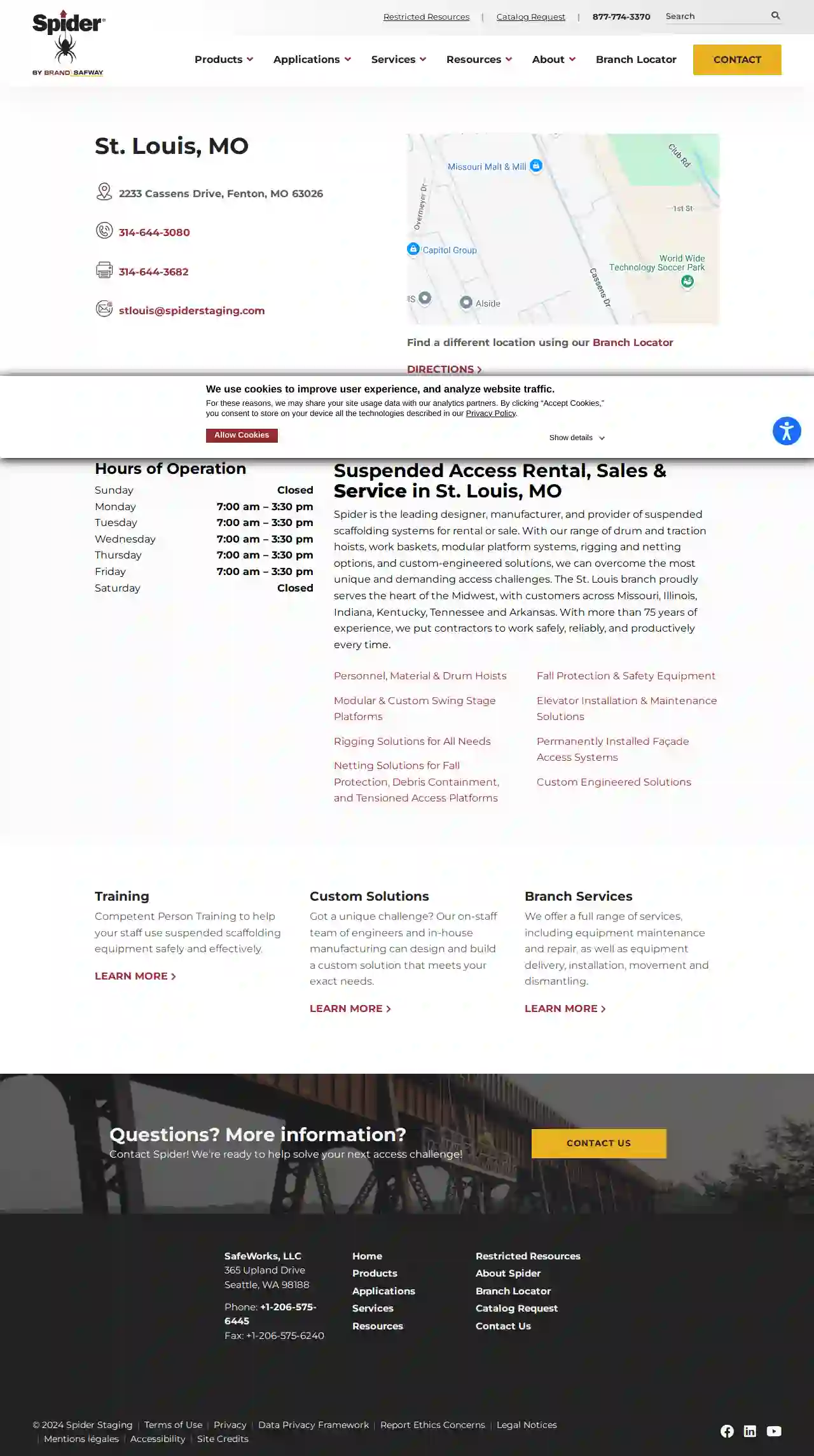
Spider by BrandSafway
51 reviewsFenton, MO, 2233 Cassens Drive, 63026, USAt Spider Staging, we're the leading designer, manufacturer, and provider of suspended scaffolding systems for rental or sale. With over 75 years of experience, we put contractors to work safely, reliably, and productively every time. Our range of drum and traction hoists, work baskets, modular platform systems, rigging and netting options, and custom-engineered solutions can overcome the most unique and demanding access challenges. We proudly serve the heart of the Midwest, with customers across Missouri, Illinois, Indiana, Kentucky, Tennessee, and Arkansas. Our team of engineers and in-house manufacturing can design and build a custom solution that meets your exact needs. We also offer a full range of services, including equipment maintenance and repair, as well as equipment delivery, installation, movement, and dismantling. Contact us today to solve your next access challenge!
- Services
- Why Us?
- Accreditations
- Gallery
Get Quote
Pat Kelly Equipment Company, Inc.
4.749 reviews5920 North Lindbergh Boulevard, Hazelwood, 63042, USAmerican Pneumatic Tools, Inc. is a leading provider of pneumatic tools and equipment. With a wide range of products from top brands like Atlas Copco, Belshe Trailers, and Bil-Jax, we cater to various industries such as construction, landscaping, and agriculture. Our showroom is located at 5920 North Lindbergh Boulevard in Hazelwood, MO, and we offer equipment rentals, service, and financing options. Our team of experts is dedicated to providing exceptional customer service and support. Contact us today to learn more about our products and services.
- Services
- Why Us?
- Accreditations
- Our Team
- Testimonials
- Gallery
Get Quote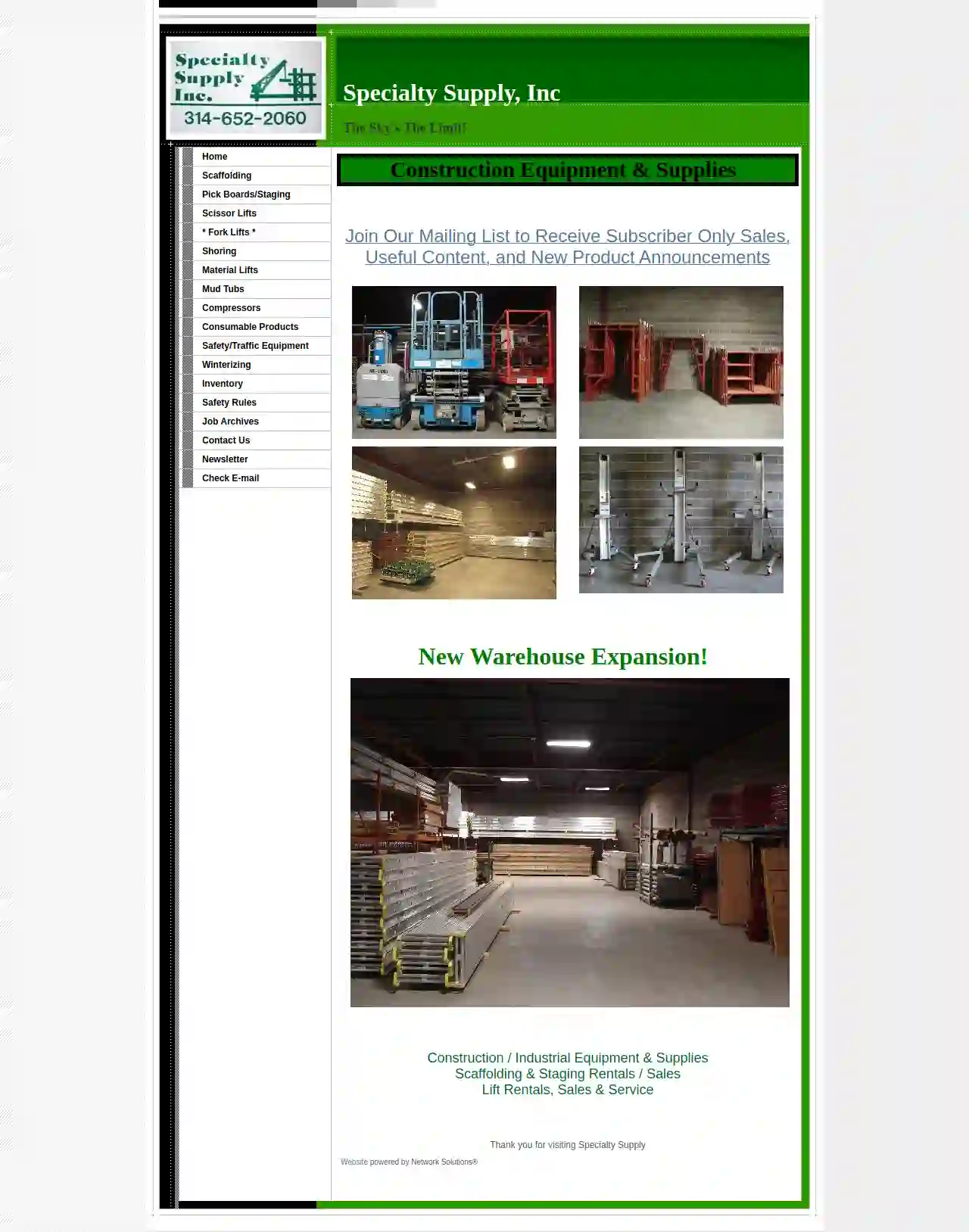
Specialty Supply Inc
45 reviews123 Main St, Springfield, IL, 12345, USSpecialty Supply, Inc. is a leading provider of construction equipment and supplies, offering a wide range of scaffolding, staging, lift rentals, and sales. With a commitment to quality and customer satisfaction, Specialty Supply Inc. aims to meet all your construction needs.
- Services
- Why Us?
- Accreditations
- Our Team
- Testimonials
- Gallery
Get Quote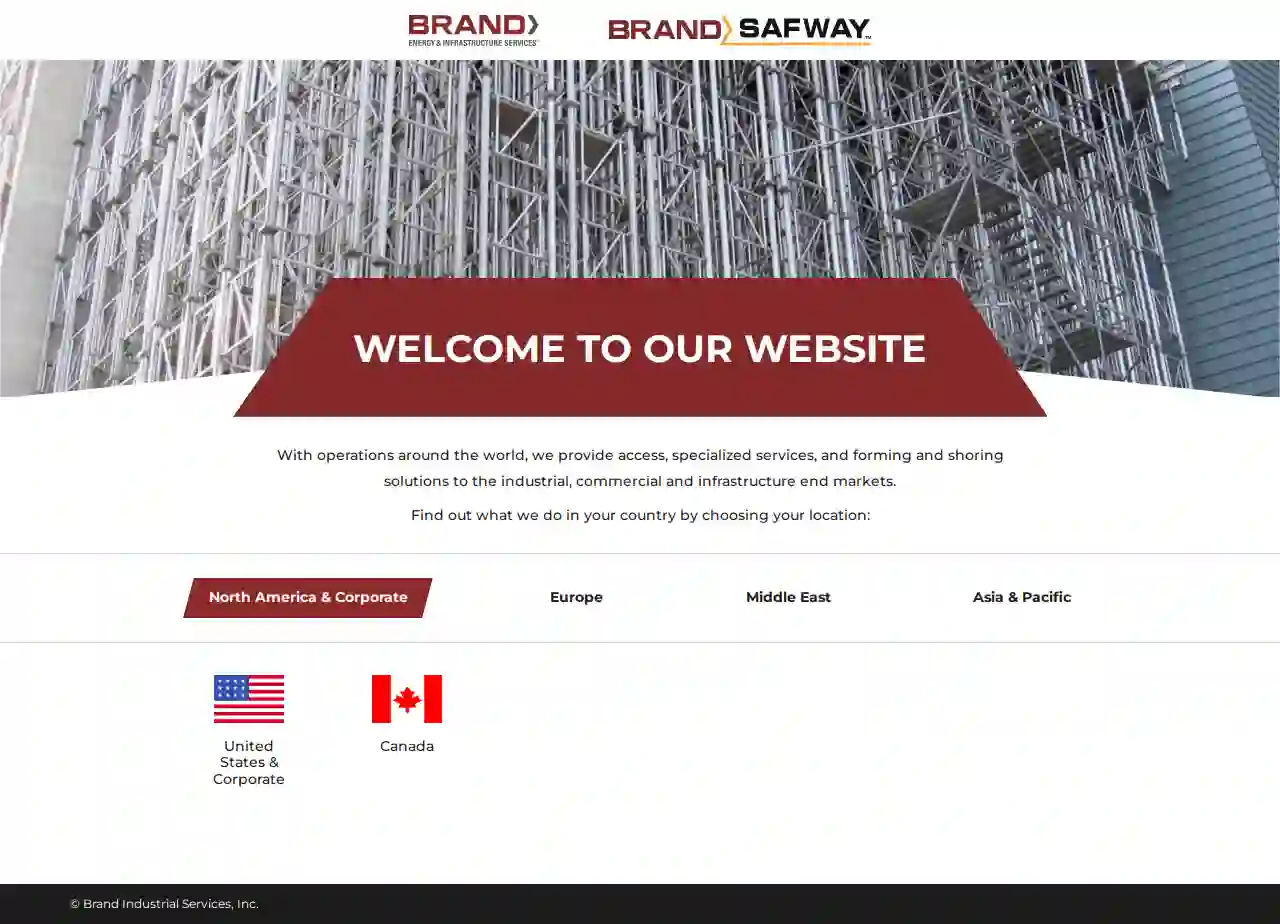
Brand Energy Services
52 reviewsSuite 100, 123 Industrial Drive, New York, 12345, USBrand Industrial Services, Inc. is a global company with operations around the world, providing access, specialized services, and forming and shoring solutions to the industrial, commercial, and infrastructure end markets. The company operates in various countries including North America, Europe, Middle East, Asia, and Pacific, with specific locations in the United States, Canada, Belgium, France, Germany, Netherlands, Romania, U.K., Saudi Arabia, United Arab Emirates, Australia, and India.
- Services
- Why Us?
- Accreditations
- Our Team
- Testimonials
- Gallery
Get Quote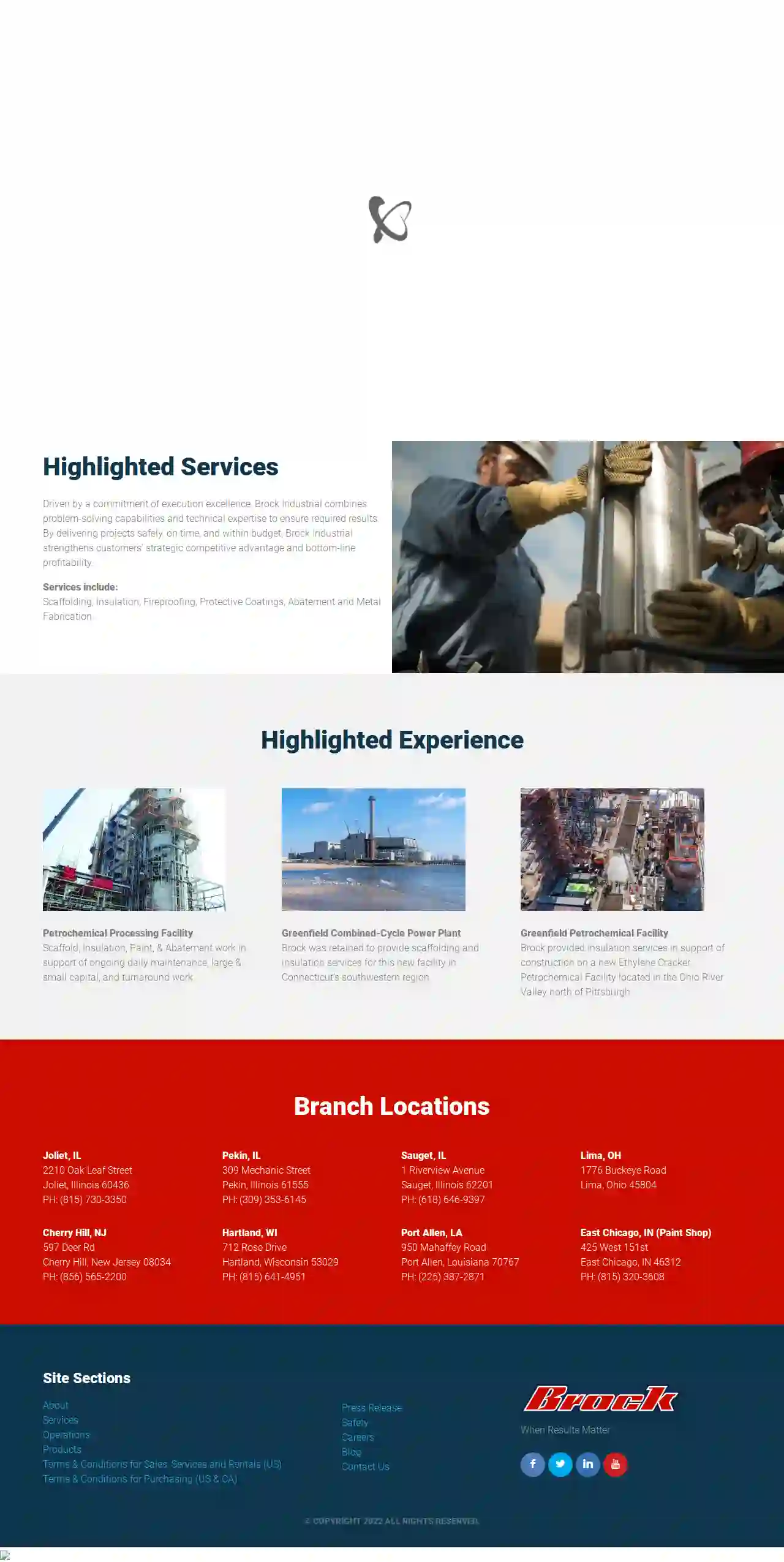
BROCK INDUSTRIAL
4.112 reviewsSauget, Illinois, 1 Riverview Avenue, 62201, USBrock Industrial Services is a leading specialty soft craft services contractor, providing a wide range of services including scaffolding, painting, insulation, shoring, lead and asbestos abatement, fireproofing, facilities maintenance, and fabrication. With a strong focus on safety, quality, and customer satisfaction, Brock serves diverse industries such as petrochemical, refining, power generation, offshore, heavy manufacturing, pipelines and transmission, nuclear, and pulp and paper. The company operates across the United States and Canada, offering capital projects, maintenance, and turnarounds support.
- Services
- Why Us?
- Accreditations
- Our Team
- Testimonials
- Gallery
Get Quote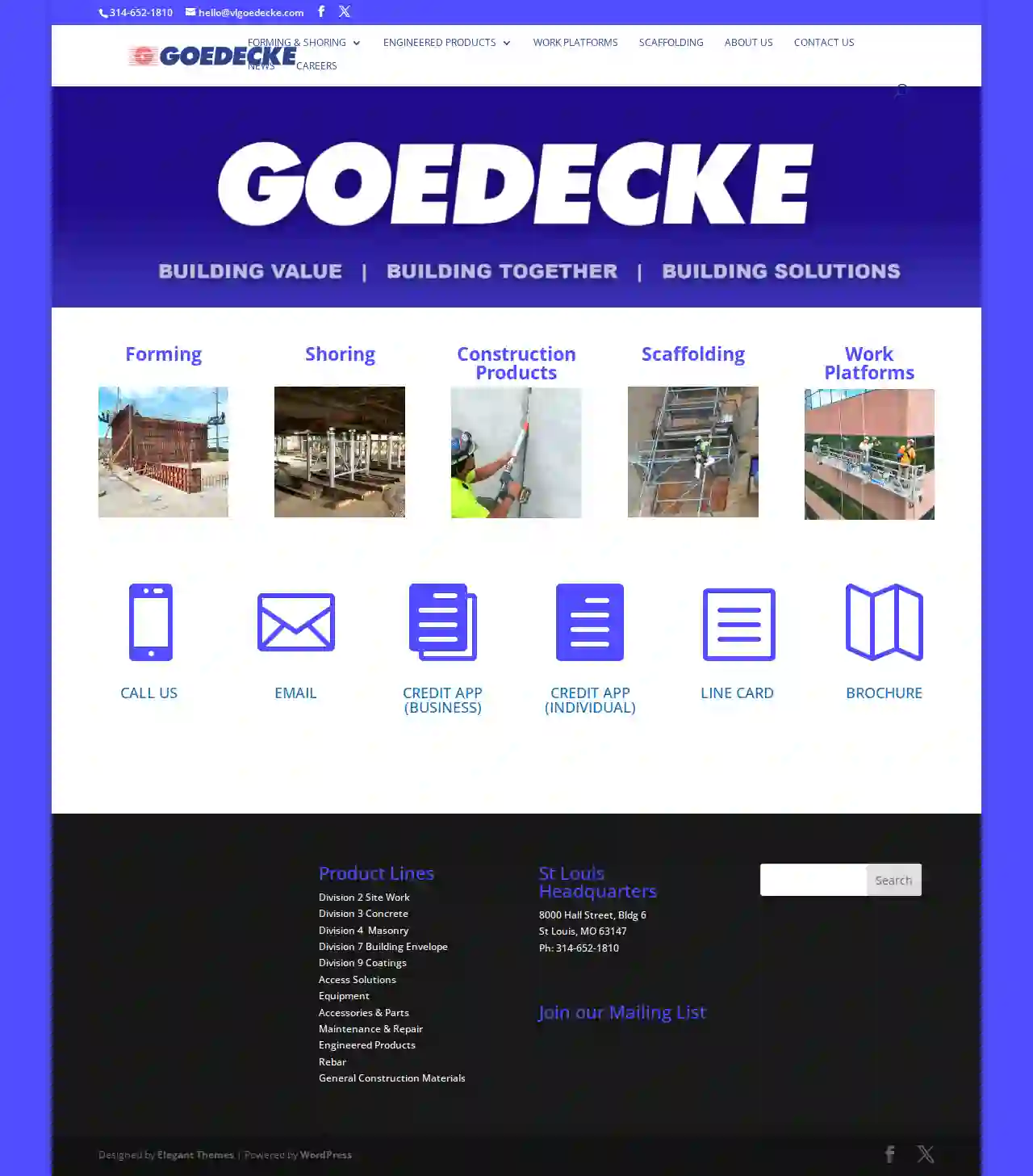
Goedecke (St Louis)
4.424 reviews8000 Hall Street, Bldg 6, St. Louis, 63147, USGoedecke & Co. Inc. is a leading provider of construction materials and services, specializing in forming, shoring, scaffolding, and work platforms. With a strong focus on quality and customer satisfaction, the company offers a wide range of engineered products, including rebar, general construction materials, and accessories. Based in St. Louis, MO, Goedecke & Co. Inc. serves various cities, providing top-notch solutions for construction projects.
- Services
- Why Us?
- Accreditations
- Gallery
Get Quote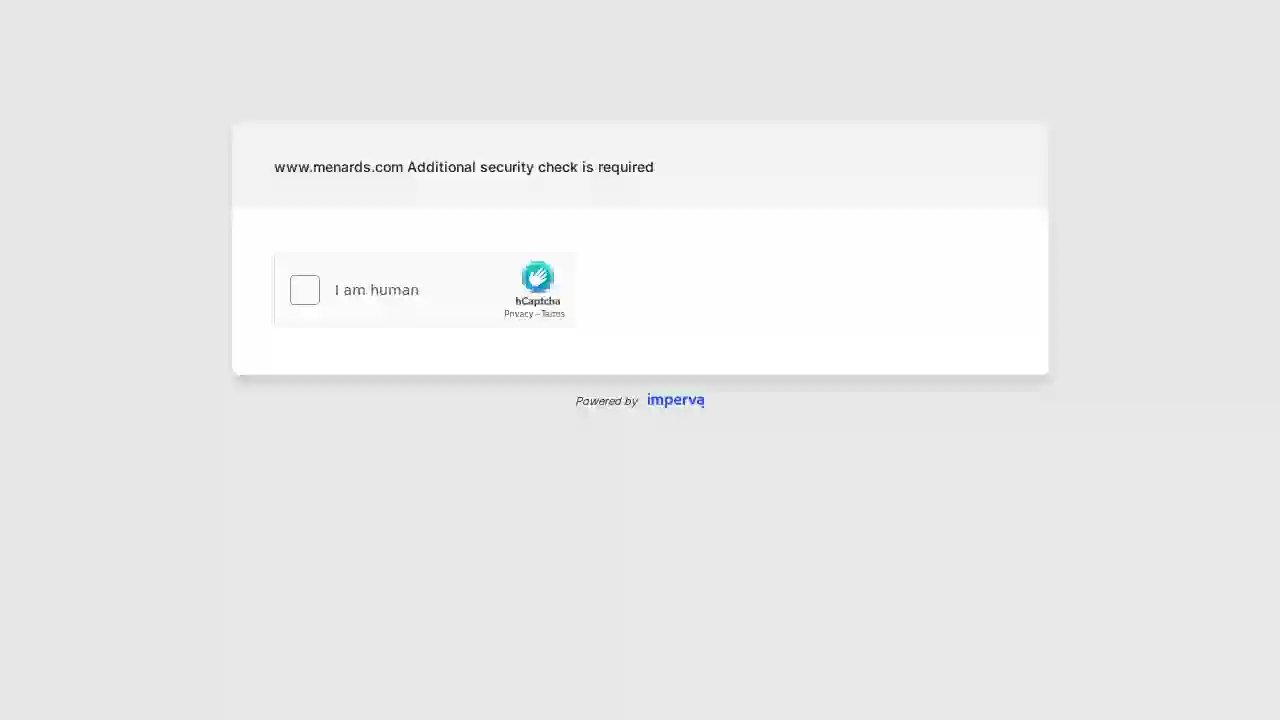
Menards
4.1774 reviews123 Main St, CityName, 00000, USMenards is a leading home improvement store offering a wide range of products and services. With a strong commitment to customer satisfaction, Menards aims to provide the best shopping experience for its customers. The company has a dedicated team of professionals who are always ready to assist with any queries or needs.
- Services
- Why Us?
Get Quote
Pack's Hardware
4.6216 reviews310 W Frontview, Dodge City, 67801, USWaters Hardware is a family-owned, Kansas-based company with more than 125 years of serving our communities. From a small general store in Manchester, Kansas in 1894, we grew to 7 store locations across the state. In 2019, Waters, Inc. was purchased by Gerken Rent-All, which is owned and operated by the Gerken family since 2002. This brought us to 12 hardware stores with rental (2 with lumberyards also), and 12 stand-alone rental locations. In 2021, we added 4 new hardware locations: 2 Euston Hardware locations, Pack's Hardware and an additional Waters location (formerly Oskaloosa Lumber). In 2022, we expanded again with the addition of 7 Waters Hardware stores (formerly Nuts and Bolts), located in Kansas and Missouri. Whether DIY or contractor, our trusted and knowledgeable team members are committed to providing a full complement of quality products and services to you to make certain that your projects are successful.
- Services
- Why Us?
- Gallery
Get Quote
Menards
4.3St. Louis, USMenards is a leading home improvement store that offers a wide range of products and services to help customers enhance their homes. With a strong commitment to customer satisfaction, Menards strives to provide top-quality products at competitive prices. Their mission is to provide excellent customer service, quality products, and competitive pricing to ensure customer satisfaction. Menards has a dedicated team of professionals who are experienced in their respective fields, ensuring that customers receive the best advice and assistance.
- Services
- Why Us?
Get Quote
Over 2,353+ Scaffolding Contractors registered
Our scaffolding companies operate in Mehlville & surroundings!
ScaffoldingHQ has curated and vetted Top Scaffolding Companies in and around Mehlville. Find the most reliable pro today.
Frequently Asked Questions About Scaffolding Rental
- General Liability Insurance: Provides coverage if someone is injured or property is damaged due to your use of the scaffolding.
- Worker's Compensation Insurance (if you have employees): Covers medical expenses and lost wages for employees injured while working on the scaffolding.
- Tube and Clamp: Capacity depends on the configuration and the strength of the components.
- System Scaffolding: Typically has higher load capacities due to its pre-engineered design.
- Mobile Towers: Have specific weight limits based on their size and model.
- All Components: Ensure all the necessary components (tubes, clamps, boards, braces, etc.) are present and in good condition.
- Damage or Defects: Look for any signs of damage, rust, or defects on the scaffolding parts.
- Scaffolding Tag: Verify that the scaffolding tag is up-to-date and shows the last inspection date.
- Safety Features: Check that guardrails, toeboards, and other safety features are included and in working order.
- Type of Scaffolding: Tube and clamp, system scaffolding, mobile towers, and specialized systems have different rental rates.
- Scaffolding Size and Height: Larger and taller scaffolding structures require more materials, increasing the cost.
- Rental Duration: The length of the rental period will significantly affect the price.
- Location: Rental rates can vary by location due to differences in labor costs and demand.
- Delivery and Setup: Some companies charge extra for delivery, erection, and dismantling services.
Do I need insurance to rent scaffolding?
What are the weight limits for different types of scaffolding?
What should I check for when the scaffolding is delivered?
How much does it cost to rent scaffolding?
Do I need insurance to rent scaffolding?
- General Liability Insurance: Provides coverage if someone is injured or property is damaged due to your use of the scaffolding.
- Worker's Compensation Insurance (if you have employees): Covers medical expenses and lost wages for employees injured while working on the scaffolding.
What are the weight limits for different types of scaffolding?
- Tube and Clamp: Capacity depends on the configuration and the strength of the components.
- System Scaffolding: Typically has higher load capacities due to its pre-engineered design.
- Mobile Towers: Have specific weight limits based on their size and model.
What should I check for when the scaffolding is delivered?
- All Components: Ensure all the necessary components (tubes, clamps, boards, braces, etc.) are present and in good condition.
- Damage or Defects: Look for any signs of damage, rust, or defects on the scaffolding parts.
- Scaffolding Tag: Verify that the scaffolding tag is up-to-date and shows the last inspection date.
- Safety Features: Check that guardrails, toeboards, and other safety features are included and in working order.
How much does it cost to rent scaffolding?
- Type of Scaffolding: Tube and clamp, system scaffolding, mobile towers, and specialized systems have different rental rates.
- Scaffolding Size and Height: Larger and taller scaffolding structures require more materials, increasing the cost.
- Rental Duration: The length of the rental period will significantly affect the price.
- Location: Rental rates can vary by location due to differences in labor costs and demand.
- Delivery and Setup: Some companies charge extra for delivery, erection, and dismantling services.